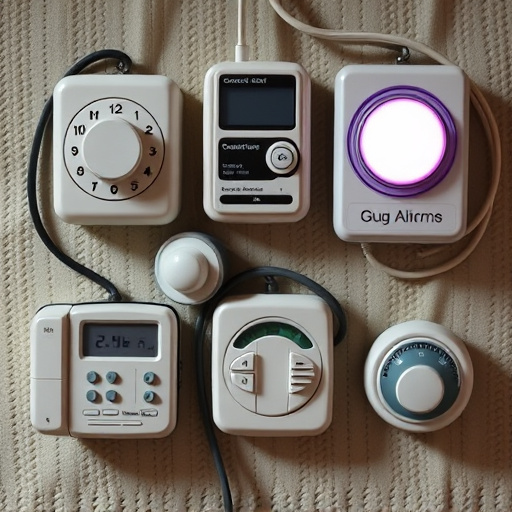Personal protection beacons with GPS technology offer advanced emergency response by sharing precise locations and activating automatically upon sudden movement, falls, or prolonged immobility, ensuring swift help even if the user cannot manually alert authorities. Understanding manual and automatic activation types is crucial for selecting the right device, balancing control and convenience to enhance personal safety in various scenarios.
Personal protection beacons with GPS are transforming personal safety, offering vital tools for emergencies. This article delves into the world of these innovative devices, providing an in-depth look at their features and functionality. We explore ‘Understanding Personal Protection Beacons’, dissecting the power of GPS tracking and location sharing. Furthermore, we compare different ‘Personal Alarm Activation Types’ to highlight how each mechanism balances security and convenience. By the end, readers will have a comprehensive guide to choosing the ideal personal protection beacon.
- Understanding Personal Protection Beacons: An Overview
- GPS Tracking and Location Sharing: Features and Benefits
- Types of Personal Alarm Activation: How They Work
- Comparing Activation Mechanisms: Security vs Convenience
Understanding Personal Protection Beacons: An Overview
Personal protection beacons equipped with GPS technology offer a powerful tool for personal safety, especially in remote or unfamiliar locations. These devices are designed to provide emergency services with precise location data in case of distress, enabling swift response times. Understanding how these beacons work and their various activation types is crucial when considering their role as a vital safety net.
Compared to traditional personal alarm systems that rely on manual triggering, GPS-enabled beacons offer an automated approach. They can be configured to activate upon detecting specific user-defined triggers, such as falling or remaining immobile for a set period. This advanced functionality ensures that help can be dispatched even if the individual is unable to manually trigger an alert due to an emergency situation.
GPS Tracking and Location Sharing: Features and Benefits
GPS tracking is a cornerstone feature of personal protection beacons, enabling precise location sharing and real-time monitoring. This technology allows users to transmit their exact coordinates to pre-selected contacts or emergency services in case of distress. With GPS, there’s no more guessing or approximating locations—every move is accurately tracked and shared.
One significant advantage lies in the variety of activation types available. Unlike traditional manual activation, modern personal alarms can be activated automatically through various triggers like sudden movement, falling, or remaining stationary for too long. This automatic activation ensures help arrives promptly, even if the user is unable to manually activate the beacon due to an emergency situation. Such features make GPS-enabled personal protection beacons invaluable tools for outdoor enthusiasts, travelers, and individuals prioritizing their safety in uncertain environments.
Types of Personal Alarm Activation: How They Work
Personal alarm activation types play a pivotal role in ensuring swift and effective protection. These systems can be broadly categorised into two main types: manual and automatic. Manual activation relies on the user’s conscious decision to trigger the alarm, often through a simple button press or voice command. This method offers immediate control but requires active participation from the individual in distress.
Automatic activation, on the other hand, leverages integrated GPS and motion sensors to detect emergencies autonomously. When the beacon detects a sudden change in location or unexpected movement, it automatically activates the alarm signal. This feature is particularly valuable in situations where an individual might be unconscious, immobilised, or unable to manually activate the alarm. Automatic activation types enhance personal safety by providing a constant, passive layer of protection.
Comparing Activation Mechanisms: Security vs Convenience
When it comes to personal protection beacons with GPS, understanding the different activation mechanisms is key to choosing the right device for your needs. One common type is the manual activation, where users explicitly press a button to set off the alarm. This method offers complete control and is ideal for situations requiring immediate attention. On the other hand, automatic or sensor-activated personal alarms are designed to kick in under specific conditions, like sudden movement or noise detection. While offering convenience, these devices might be less effective in scenarios demanding immediate, conscious action from the user.
In terms of Personal Alarm Activation Types Compared, each has its trade-offs. Manual activation prioritizes user agency but requires constant vigilance. Automatic sensors provide hands-off protection but may result in false alarms or miss certain events. A balanced approach could involve dual-activation systems that combine manual oversight with sensor technology, ensuring both security and convenience for users needing a comprehensive personal protection solution.
Personal protection beacons equipped with GPS technology offer a powerful tool for personal safety. By comparing different activation types, users can choose between secure but potentially less convenient options, or quick and easy triggers, understanding that each has its merits depending on individual needs. Ultimately, these devices empower individuals to stay safe while navigating unfamiliar environments, providing peace of mind in an increasingly complex world.
